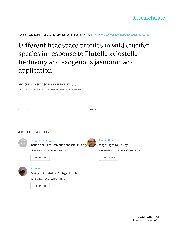摘要
Although exogenous treatment of plants with jasmonic acid (JA) may result in induced responses similar to plant defences induced by herbivory, few studies have compared the details of insect herbivory and JA-mimicked responses. We compared volatiles of two crucifer species, Cardamine impatiens and Lepidium virginicum, in response to Plutella xylostella larval feeding and exogenous application of JA, over the entire period of time when induced changes were detectable. Significant differences in the composition and timing of volatiles occurred between herbivory and JA treatments in both plants. The quantity of nitrile and isothiocyanate released in response to herbivory was significantly larger than that upon JA treatment. In each of the two plant species, most volatile components were emitted immediately upon larval feeding and their quantity dropped rapidly once feeding ceased. In contrast, the emission of volatiles in response to JA treatment lasted for a longer period of time, and the maximum emission rate was recorded 2 and 3 days after JA treatment in L. virginicum and C. impatiens respectively. These findings are discussed in the context of signal-transduction pathways and mechanisms involved in induced emissions of plant volatiles, as well as induced defences mediated by plant volatiles.
- 出版日期2010-2
- 单位浙江大学
